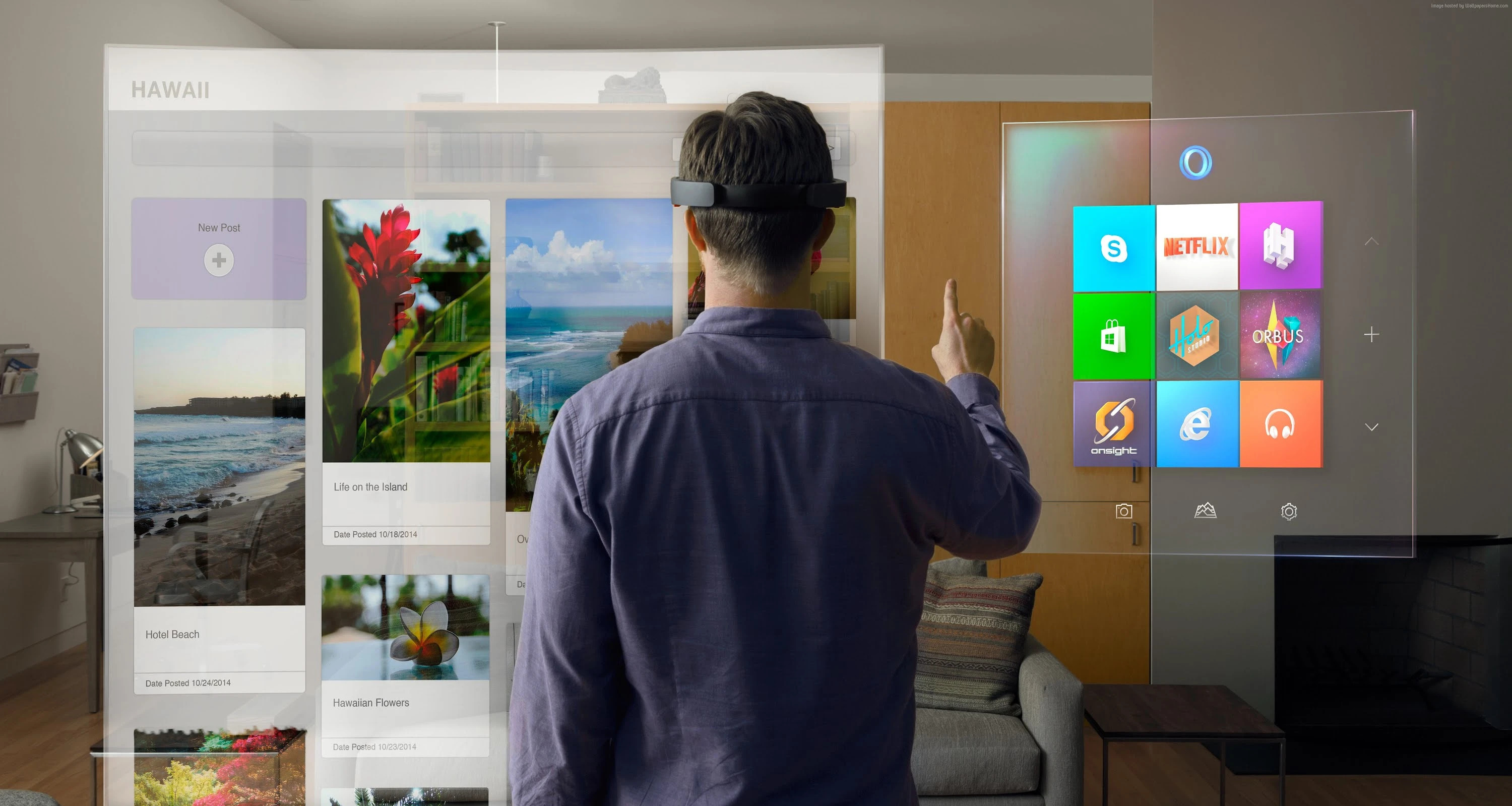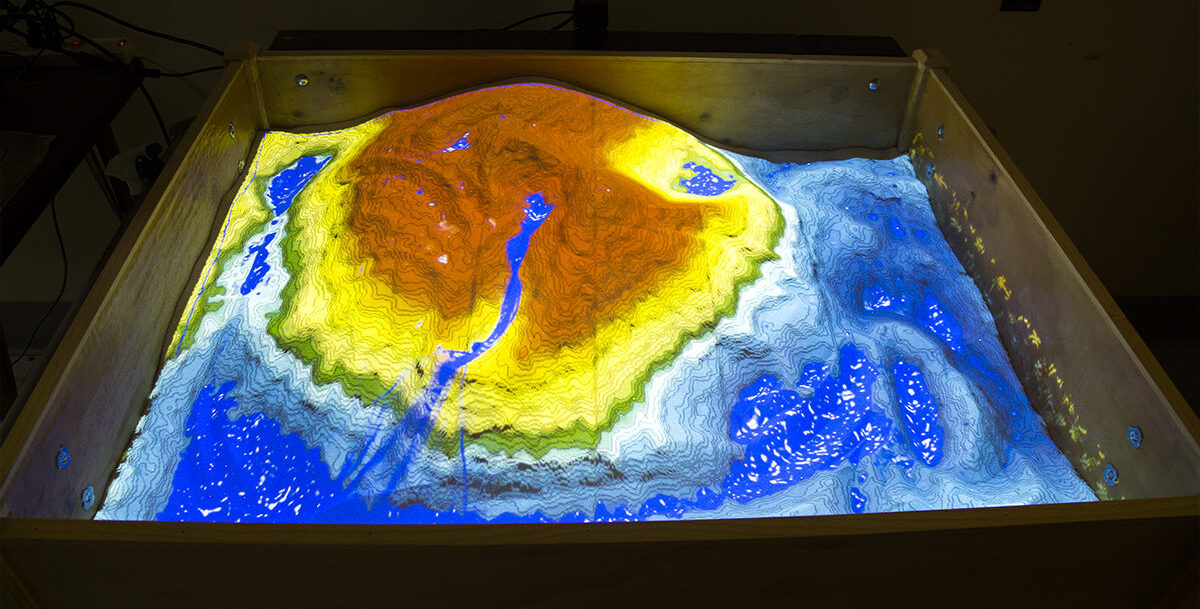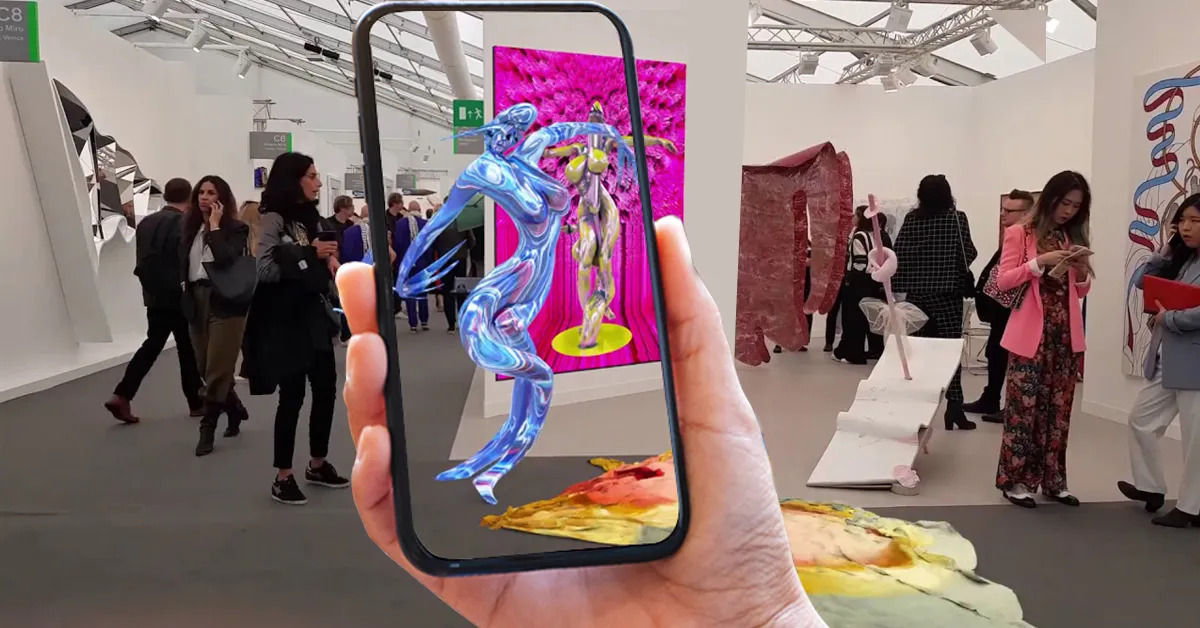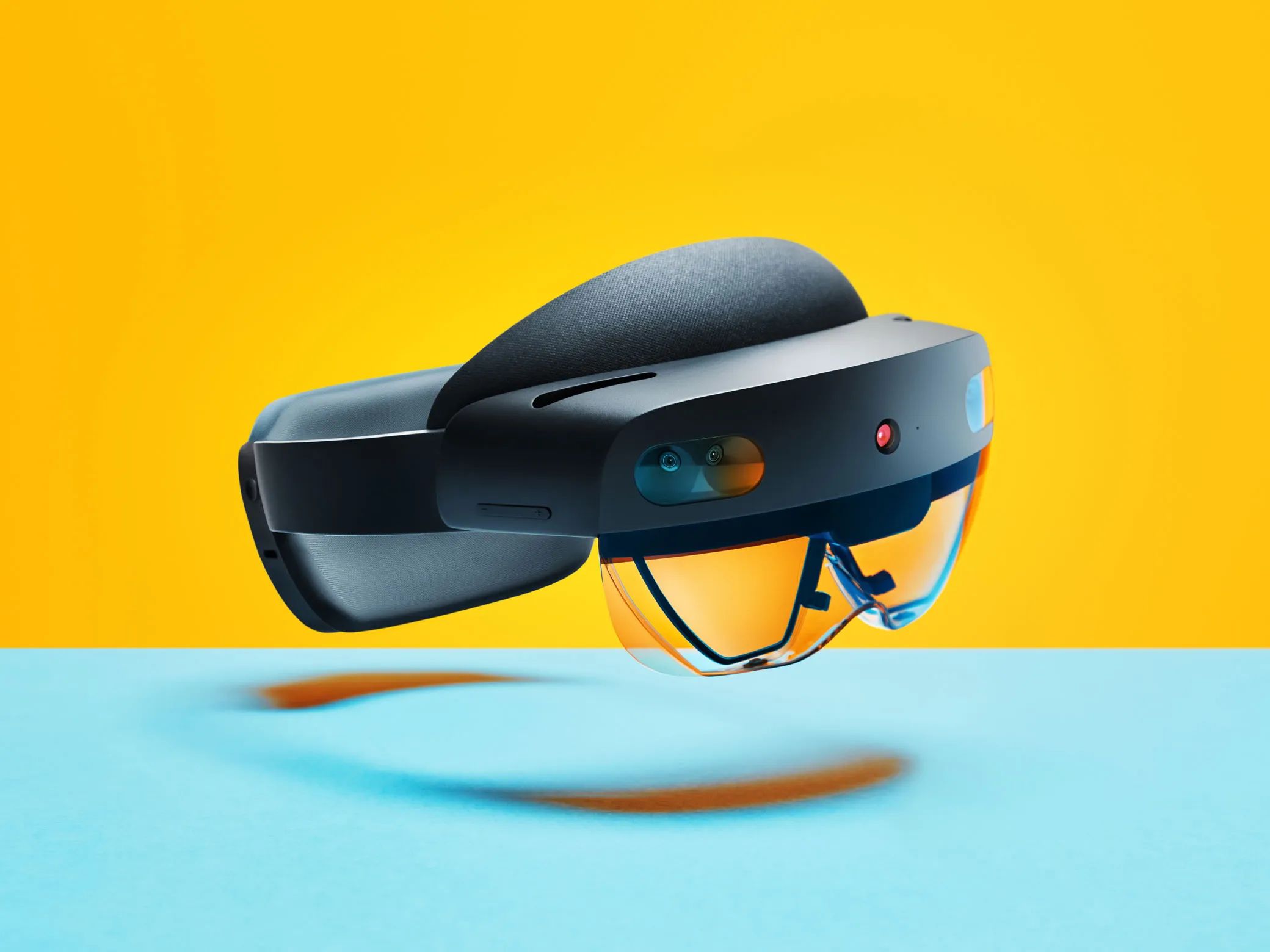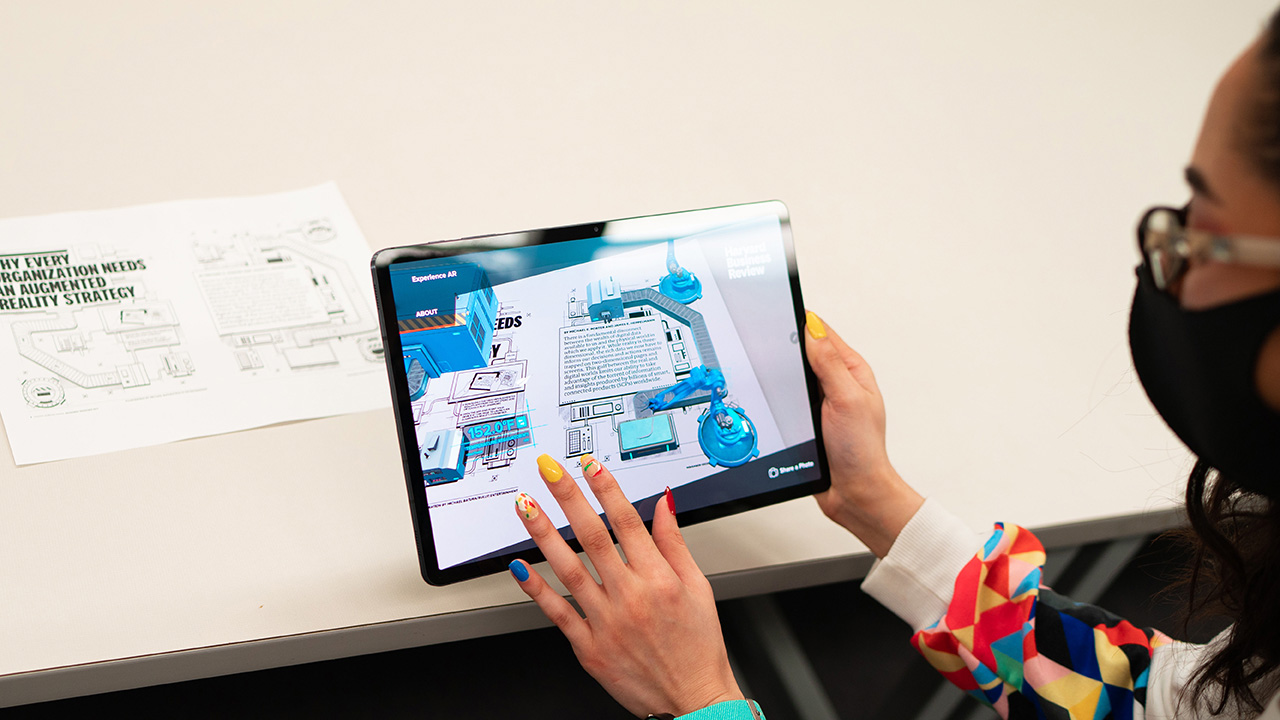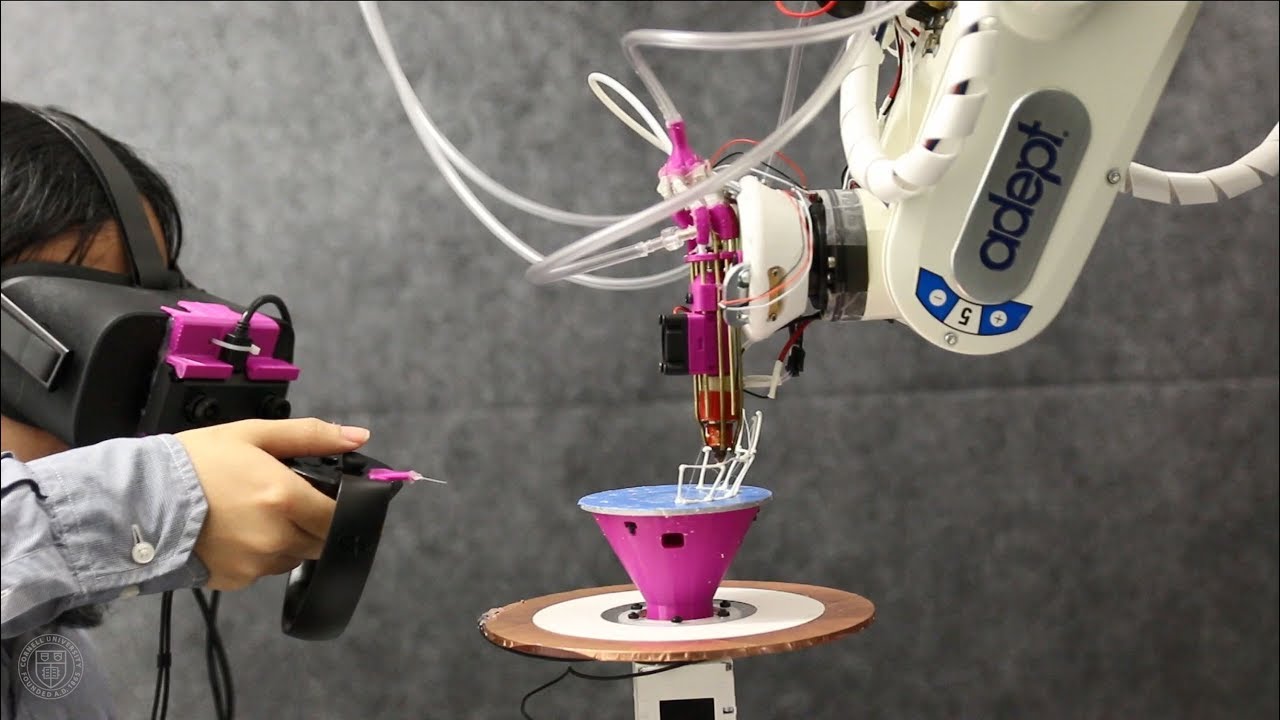Introduction
Augmented Reality (AR) software has become an increasingly popular technology in recent years, transforming the way we interact with digital content and the world around us. This revolutionary software combines virtual elements with real world environments, providing users with a seamless and immersive experience. From enhancing educational tools to revolutionizing the gaming industry, augmented reality software has a wide range of applications across various sectors.
AR software overlays computer-generated images, videos, or 3D models onto the user’s real-world environment, often through the use of a mobile device or specialized glasses. It uses a combination of sensors, cameras, and algorithms to track and map the physical environment, allowing virtual elements to interact with it in real-time. This seamless integration creates a captivating and interactive experience that can be both informative and entertaining.
The purpose of AR software is to enhance the user’s perception of reality by overlaying digital information onto their surroundings. This can include anything from informative text and graphics to interactive virtual objects and animations. The software recognizes specific markers or objects in the environment, enabling it to accurately position and anchor virtual content in the real world.
Augmented reality software has gained significant popularity across a range of industries, including education, entertainment, manufacturing, and retail. It has the potential to revolutionize the way businesses and individuals interact with their surroundings and access information. With the continuous advancements in technology, AR software is becoming more accessible and user-friendly, opening up new possibilities for innovation and creativity.
While the potential of augmented reality software is vast, it is essential for businesses and individuals to have a clear understanding of its capabilities, benefits, and considerations. In this article, we will explore the definition and workings of augmented reality software, the common uses and benefits, different types available, and important considerations when choosing and implementing AR software for your business.
So, let’s dive into the world of augmented reality software and discover its transformative potential in various industries, from education to entertainment and beyond.
Definition of Augmented Reality (AR) Software
Augmented Reality (AR) software refers to a type of technology that integrates computer-generated virtual elements into the real world, enhancing the user’s perception and interaction with their environment. It combines real-time sensory inputs, such as visuals and audio, with digital content to create an immersive and interactive experience for users.
AR software utilizes various techniques, such as computer vision and 3D tracking, to overlay virtual objects, images, or videos onto the user’s view of the real world. This can be achieved through mobile devices, smart glasses, or other wearable devices equipped with cameras and sensors. The software analyzes the user’s surroundings, detects markers or objects, and accurately positions virtual content onto them, aligning it seamlessly with the real-world environment.
Unlike Virtual Reality (VR) technology, which completely immerses users in a digital environment, augmented reality software enhances the existing reality by overlaying digital information onto it. It enables users to simultaneously interact with both the physical world and virtual elements, enhancing their understanding and engagement with the environment.
AR software is widely used in various industries and sectors. In education, it can be employed to enhance learning experiences by overlaying educational content, simulations, or interactive 3D models onto textbooks or real-world objects. In the entertainment industry, AR software is used in gaming applications, where players can interact with virtual characters or objects in their actual surroundings.
Moreover, AR software has found applications in areas such as healthcare, by providing surgeons with real-time guidance during complex procedures, and in architecture and design, allowing architects to visualize and modify 3D models of buildings within their intended real-world settings. Additionally, AR software has been utilized in marketing and advertising campaigns to create interactive and engaging experiences for customers.
As advancements in technology continue, augmented reality software is becoming more accessible and user-friendly. Developers are continually creating new and innovative applications, expanding the possibilities for its use in various fields. By blending the virtual and real worlds, AR software has the potential to transform the way we interact with digital content and our physical surroundings.
How Augmented Reality Works
Augmented Reality (AR) works by seamlessly blending digital content with the real world, creating an interactive and immersive experience for users. Understanding the basic principles of AR technology can help us grasp its inner workings.
AR software relies on a combination of sensors, cameras, and algorithms to track and map the user’s real-world environment. This enables the software to position virtual objects accurately and integrate them into the user’s view. Here’s a simplified breakdown of how augmented reality works:
1. Environmental Detection: The AR software uses sensors and cameras to gather real-time information about the user’s environment. This can include detecting the user’s location, identifying markers, objects, or surfaces, and mapping the physical space.
2. Tracking: Once the software collects data about the environment, it uses tracking algorithms to monitor the user’s movements and the changes in their surroundings. This allows the virtual objects to remain anchored and aligned with the real world, even as the user moves or interacts with the environment.
3. Object Recognition: AR software can recognize specific objects or markers placed in the real world. It analyzes the visual data from the camera and matches it against a database of known objects or markers. This recognition enables the software to overlay virtual content onto the recognized objects or markers, combining the digital and real worlds.
4. Rendering and Display: The software then generates the virtual elements, such as 3D models, graphics, or animations, based on the user’s interactions and the environmental data. It combines the virtual content with the real-world view captured by the camera, creating a unified and immersive experience.
5. Interaction: Users can interact with the augmented reality environment through gestures, voice commands, or other input methods. AR software can track and respond to these interactions, altering the behavior or appearance of the virtual objects accordingly.
Collectively, these processes allow AR software to seamlessly merge virtual content with the real world, enabling users to interact with digital information and objects in a natural and intuitive manner.
It’s important to highlight that the performance and accuracy of AR software depend on the sophistication of the hardware and the quality of the algorithms employed. As technology advances, we can expect more refined and immersive AR experiences.
Common Uses of Augmented Reality Software
Augmented Reality (AR) software has gained significant popularity in various industries, revolutionizing the way we interact with technology and the world around us. Let’s explore some of the common uses of augmented reality software:
1. Education: AR software is transforming education by enhancing traditional learning experiences. Teachers can use AR applications to overlay educational content, such as 3D models or interactive simulations, onto textbooks or real-world objects. This enables students to visualize complex concepts and engage in interactive learning, making education more engaging and effective.
2. Gaming: AR software has taken gaming experiences to a new level. Games like Pokémon Go and Minecraft Earth have integrated augmented reality, allowing players to interact with virtual elements in their real-world surroundings. This provides an immersive and interactive gaming experience, blurring the line between virtual and physical realms.
3. Marketing and Advertising: AR software offers innovative opportunities for marketers and advertisers to engage with their target audience. By creating AR-enabled experiences, brands can allow customers to try products virtually, visualize how they would look in their environment, or participate in interactive campaigns. This not only enhances customer engagement but also improves brand awareness and conversion rates.
4. Retail: AR software is reshaping the retail industry by creating interactive and personalized shopping experiences. Customers can use AR applications to virtually try on clothing, visualize how furniture would fit in their home, or preview products and packaging before making a purchase decision. This technology enhances the shopping experience, reduces product returns, and encourages online and in-store sales.
5. Healthcare: Augmented reality software is being utilized in the healthcare industry to improve patient care and training. Surgeons can use AR during complex procedures to overlay real-time data, such as patient vital signs or medical images, onto their field of view. This provides precise guidance and improves surgical accuracy. AR is also used for medical training, allowing students to simulate procedures and learn in a realistic yet controlled environment.
6. Manufacturing and Maintenance: AR software is streamlining manufacturing processes and maintenance tasks. It can provide workers with real-time visibility into equipment manuals, work instructions, or 3D models. This allows technicians to perform complex tasks with accuracy and efficiency, reducing errors and downtime.
7. Navigation and Wayfinding: AR software is changing the way we navigate and explore our surroundings. It can provide real-time directions, point of interest information, or overlay street names and landmarks on the user’s view. This makes navigation easier and more intuitive, particularly in unfamiliar or crowded environments.
These are just a few examples of how augmented reality software is being utilized in different industries. As technology continues to advance and become more accessible, we can expect to see even more innovative and creative applications of AR in various sectors.
Benefits of Augmented Reality Software
Augmented Reality (AR) software offers numerous benefits that have the potential to transform various industries. Let’s explore some of the key advantages of using augmented reality software:
1. Enhanced User Experience: AR software provides users with a highly immersive and interactive experience. By overlaying digital content onto the real world, it enhances the user’s perception of reality and allows them to interact with virtual objects in a natural and intuitive manner. This creates a more engaging and memorable experience for users, whether in gaming, education, or other applications.
2. Improved Learning and Training: In educational and training settings, augmented reality software can greatly enhance the learning process. By visualizing complex concepts, providing interactive simulations, and allowing hands-on practice, AR software improves retention and comprehension. It enables students and trainees to better understand and apply knowledge in real-world scenarios, making learning more effective and engaging.
3. Increased Engagement and Interactivity: AR software offers a higher level of engagement as compared to traditional methods. Whether in marketing campaigns, retail experiences, or entertainment, AR captivates users by allowing them to interact with virtual elements in their real-world environment. This interactivity sparks curiosity, encourages exploration, and fosters a memorable connection with the content or brand.
4. Real-time Information Overlay: With AR software, users can access real-time information directly in their field of view. This can include data such as product details, pricing, or inventory information while shopping, or patient vital signs and medical records for healthcare professionals. Real-time information overlay improves decision-making, speeds up processes, and enhances situational awareness.
5. Cost and Time Efficiency: AR software can save costs and time in various industries. In manufacturing, for example, guided AR instructions can reduce training time for new employees and streamline assembly or maintenance processes. In retail, customers can virtually try on products, reducing the need for physical store visits and product returns. AR can also facilitate remote collaboration, eliminating the need for multiple personnel to be physically present at a location.
6. Marketing and Branding Opportunities: Augmented reality software provides innovative avenues for marketers and brands to engage with their audience. AR campaigns and experiences create a unique and memorable brand image, leading to increased brand awareness and customer loyalty. By incorporating AR into their marketing strategies, companies can stand out from competitors and create a strong, interactive connection with their target market.
7. Enhanced Visualization and Planning: AR software allows users to visualize and plan projects or designs in real-world contexts. Architects and designers can overlay 3D models of buildings or products onto physical spaces to assess how they fit and look. This improves accuracy and reduces errors in planning and decision-making processes.
These benefits highlight the transformative potential of augmented reality software in improving user experiences, simplifying processes, and driving innovation across multiple industries. As AR technology continues to evolve and become more accessible, the possibilities for its applications and benefits will only continue to expand.
Different Types of Augmented Reality Software
Augmented Reality (AR) software comes in various forms, each designed for specific applications and platforms. Let’s explore some of the different types of augmented reality software:
1. Marker-based AR: Marker-based AR software uses predefined markers, also known as fiducial markers, to trigger the display of virtual content. These markers are usually in the form of printed patterns, such as QR codes or symbols, which the software can recognize using computer vision algorithms. When the camera identifies a marker, the software overlays virtual content onto it, creating an augmented reality experience. Marker-based AR is commonly used in advertising, gaming, and educational applications.
2. Markerless AR: Unlike marker-based AR, markerless AR software does not require specific markers to overlay virtual content. Instead, it uses computer vision algorithms to analyze the user’s environment and identify objects or surfaces for content placement. This type of AR software relies on visual features, such as edges, corners, or textures, to track and anchor virtual content. Markerless AR is popular in applications like furniture placement, outdoor navigation, and industrial maintenance.
3. Projection-based AR: Projection-based AR software projects virtual content directly onto physical surfaces. It uses projectors to display images or videos onto objects, walls, or floors, creating an interactive augmented reality experience. Projection-based AR is commonly used in advertising, stage performances, and art installations to merge physical and digital elements seamlessly.
4. Superimposition-based AR: Superimposition-based AR software overlays virtual content onto the user’s view without modifying or replacing the real-world environment. It adds informative or decorative elements onto the user’s field of view, enhancing their perception of reality. Superimposition-based AR is often used in applications like sports broadcasts, industrial training, and medical imaging.
5. Location-based AR: Location-based AR software utilizes GPS or other positioning technologies to overlay virtual content that is specific to a user’s location. It enhances the user’s real-world surroundings by providing location-based information, such as points of interest, historical facts, or user reviews, on their device’s screen. Location-based AR is commonly used in tourism, navigation, and city exploration applications.
6. Recognition-based AR: Recognition-based AR software uses object recognition algorithms to detect and track specific objects or images. When the camera identifies a recognized object, the software overlays relevant virtual content onto it. This type of AR software is often used in applications like product packaging, gaming, and interactive advertising.
These are just a few examples of the different types of augmented reality software available. Some applications may combine multiple types to achieve specific functionalities. As technology advances, we can expect to see further innovations and refinements in augmented reality software, opening up exciting possibilities for enhancing user experiences and transforming various industries.
Examples of Popular Augmented Reality Software
Augmented Reality (AR) software is rapidly gaining popularity, and several applications have become widely recognized and utilized by both individuals and businesses. Let’s explore some examples of popular augmented reality software:
1. Pokémon Go: Pokémon Go took the world by storm when it was released in 2016. This mobile game utilized AR technology to allow players to capture and interact with virtual Pokémon characters in their real-world surroundings. The game’s success showcased the potential of AR in gaming and demonstrated the mass appeal of augmented reality experiences.
2. Snapchat AR Filters: Snapchat popularized augmented reality filters, allowing users to overlay engaging and interactive digital effects onto their selfies or videos. From adding animal ears and noses to face swapping with friends, Snapchat’s AR filters revolutionized the way people express themselves and interact with social media platforms.
3. IKEA Place: IKEA Place is an AR application that enables users to virtually place IKEA furniture in their real-world environment before making a purchase. This allows customers to visualize how the furniture will look and fit in their home, making the shopping experience more immersive and convenient.
4. Google Maps Live View: Google Maps Live View is an AR feature integrated into the Google Maps app. It combines GPS and augmented reality technology to provide users with real-time walking directions through their device’s camera view. The AR overlay shows arrows and indications on the user’s screen, simplifying navigation and making it easier to find destinations in unfamiliar locations.
5. Snapchat Spectacles: Snapchat Spectacles are a pair of AR-enabled sunglasses that allow users to capture videos and photos from their perspective. The Spectacles overlay interactive filters and effects onto the user’s real-world view, providing a unique and immersive recording experience.
6. HoloLens: Developed by Microsoft, HoloLens is a head-mounted display that enables users to view and interact with holographic content in a mixed reality environment. It overlays 3D digital images onto the real world, creating interactive and realistic experiences for various applications, including gaming, design, and industrial training.
7. Instagram AR Effects: Instagram offers a range of AR effects, stickers, and filters that users can apply to their photos and videos. These effects enhance visual content, adding animated and interactive elements to create engaging and shareable experiences on the platform.
These are just a few examples of popular augmented reality software applications that have gained significant recognition and user engagement. As AR technology continues to evolve, we can expect to see even more innovative and immersive experiences in various industries and sectors.
Considerations before Choosing Augmented Reality Software
When selecting augmented reality (AR) software for your business or personal use, it’s essential to consider several factors to ensure you make an informed decision. Here are some key considerations to keep in mind:
1. Purpose and Application: Determine the specific purpose and application for which you will be using AR software. Whether it’s for gaming, marketing, education, or industrial applications, different software options cater to specific needs. Consider the features, functionalities, and compatibility with your desired use case.
2. User Experience: Evaluate the user experience provided by the AR software. Is the interface intuitive and user-friendly? Does it offer smooth and seamless interactions with the virtual content? A good user experience is vital to ensure engagement and enjoyment for both your audience and end-users.
3. Hardware Requirements: Check the hardware requirements of the AR software. Some software may require specific devices or equipment, such as smartphones, tablets, or augmented reality glasses. Ensure that the software is compatible with the hardware you have or are willing to invest in.
4. Scalability and Flexibility: Consider the scalability and flexibility of the AR software. Will it be able to handle increasing demand or a larger user base? Can it be easily integrated into your existing systems or workflows? Look for software that can adapt and grow with your needs to avoid potential limitations in the future.
5. Development Resources and Support: Evaluate the availability of development resources and support for the AR software. Is there a community or a developer ecosystem that can provide guidance and assistance? Having a solid support system can ensure that any issues or challenges you encounter are addressed in a timely manner.
6. Cost and Budget: Consider the cost implications of the AR software. Some software options may have upfront expenses for licensing or equipment, while others may have ongoing subscription fees. Determine your budget and ensure that the value provided by the software aligns with the investment you are willing to make.
7. Security and Privacy: AR software may require access to user data or utilize location tracking. It is crucial to review the software’s security and privacy measures to protect sensitive information. Look for software that follows best practices in data protection and user privacy to ensure a safe and secure experience for both you and your users.
By considering these factors, you can choose the right AR software that aligns with your specific needs, provides a great user experience, and enables you to achieve your desired goals and outcomes.
How to Implement Augmented Reality Software in Your Business
Implementing augmented reality (AR) software in your business can open up new opportunities for innovation, customer engagement, and operational efficiency. To successfully integrate AR software into your business, consider the following steps:
1. Define Your Goals and Use Case: Clearly define the goals and objectives you want to achieve with AR software. Determine how it can enhance your products, services, or processes. Identify the specific use cases and areas where AR can make a significant impact. This clarity will guide your implementation strategy.
2. Research and Evaluate AR Software Options: Conduct thorough research on available AR software options that align with your defined goals and use case. Explore their features, capabilities, and compatibility with your existing systems. Compare multiple software options to find the one that best fits your requirements.
3. Plan and Design AR Experience: Work closely with your team or experts to plan and design the AR experience you want to create. Consider factors such as the target audience, user journey, desired interactions, and content that will be overlaid onto the real-world environment. Collaborate with designers, developers, and other stakeholders to ensure a cohesive and impactful AR experience.
4. Acquire Hardware and Tools: Determine the hardware and tools required to run the AR software effectively. This could include smartphones or tablets with AR capabilities, augmented reality glasses, or other specialized equipment. Ensure that the hardware you choose is compatible with the selected AR software and supports the desired functionalities.
5. Develop or Customize Content: Depending on your use case, you may need to create or customize AR content. This could involve developing 3D models, animations, or interactive elements that will be integrated into the AR experience. Collaborate with content creators or AR developers to bring your vision to life and ensure a seamless user experience.
6. Test and Iterate: Before deploying the AR software, conduct thorough testing to ensure that it functions as intended and delivers the desired user experience. Gather feedback from a sample of users or internal stakeholders and iterate on any necessary improvements. This iterative process will help refine your AR implementation and address any potential issues or challenges.
7. Train and Educate Users: Provide training and education to users who will interact with the AR software, whether they are employees, customers, or partners. Ensure they understand how to use the software effectively, the benefits it offers, and any precautions or guidelines to follow. Training can be in the form of workshops, user manuals, or online tutorials.
8. Launch and Monitor Performance: Once the AR software is implemented, launch it for your intended users. Monitor its performance, user feedback, and engagement metrics. Continuously analyze the impact and effectiveness of the AR implementation and make refinements as needed to maximize its value to your business.
By following these steps, you can successfully implement augmented reality software within your business, harnessing its potential to create unique experiences, drive customer engagement, and achieve your business goals.
Conclusion
Augmented Reality (AR) software has emerged as a powerful technology, transforming the way we interact with digital content and our physical surroundings. With its ability to seamlessly merge virtual elements with the real world, AR software has found widespread application in various industries, from gaming and entertainment to education and healthcare.
In this article, we explored the definition and workings of augmented reality software, its common uses, benefits, and different types available. We also discussed popular examples of AR software and considerations for choosing and implementing it in a business setting.
From enhancing user experiences and engagement to improving learning outcomes and simplifying complex processes, AR software offers numerous advantages. It provides an immersive and interactive experience that captivates users, boosts brand awareness, and increases operational efficiency.
When selecting and implementing AR software, it is essential to consider factors such as the intended use case, user experience, hardware requirements, scalability, and support. By carefully evaluating these aspects, businesses can choose the right AR software that aligns with their goals and offers a seamless and enjoyable experience for users.
As the technology behind augmented reality continues to advance and become more accessible, the possibilities for its applications are constantly expanding. We can expect to see further innovations and creative uses of AR software in the future, driving transformative changes across industries and enabling us to interact with the digital world in new and exciting ways.







